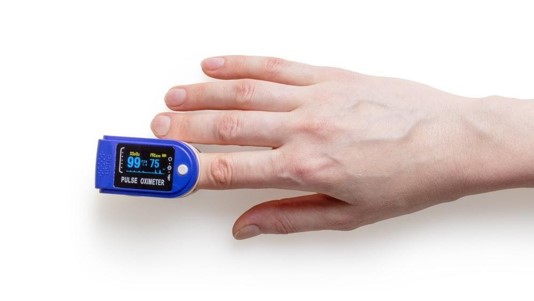While home healthcare was in demand in the pre-COVID times, the pandemic demonstrated the vitality of out-of-the-hospital care. We would like to stay on the positive side, but, unfortunately, the pandemic is not going anywhere soon. When it’s best for the patient and medical professional to stay at home, providing various types of medical care is rather difficult.
Thus, it is vital to stay on track with what is going on in the medical tech world. In this article, we will discuss the latest and most impactful home health industry trends in 2022.
Current Situation in Healthcare Market
Before diving into the top trends in home healthcare, let’s establish the general areas of the market.
Target group: elderly citizens and people with chronic disease
The pandemic accelerated the significance of home care in the healthcare industry. Yet, the main reason for the home care sector development is an aging population. As for 2020, only 13% of home care patients were below 65.
While elderly citizens always chose to stay at their own home over the nursing home, this tendency is even stronger now. According to Grace-Marie Turner, a president of the Galen Institute in Virginia, nursing homes, which already offered less freedom to their elderly inhabitants, became almost prison-like during the pandemic. The quarantine measures for the high-risk groups — elderly citizens — made leaving or receiving visitors impossible.
Another group that is in urgent need of home care is people with chronic diseases.
Roles are shifted: healthcare is passed to non-doctors
One more tendency of in-home care is a professional shift. Tasks and procedures, which doctors performed, will be distributed between nurses and physician assistants. This is appropriate and needed change will allow decentralization of medical care and distribute workload in a much more demand-responsive way.

Industry shift: redistribution
Together with redistribution of the workload, one more change has occurred in the homecare. Previously home care was targeted for people after hospital discharge. Today, it is focused on moving hospital care out of the premises, thus, to the patient’s home.
Undoubtedly, this is a significant procedural change that requires new skills and new approaches. The industry shift modeled the following redistribution in the home care industry:
- Cardiovascular disorders
- Lung diseases
- Cancer
- Impaired motor control function
- Wound care
- Diabetes
- Pregnancy
- Neurovascular diseases
Together with the demand for home care, a market value tends to grow in geometric progression. The growth from $181.9 billion to $274.7 billion is predicted by 2025. Moreover, an urgent need for optimization and the necessity to solve the problem of high healthcare costs dictating market trends. The only way to respond to the market’s current direction is digitalization.
New Home Health Care Trends
The successful implementation and development of the home health care industry are dependent on government and home care providers’ responsiveness to the technologies. Despite the increased healthcare service demand, the disturbing shortage of healthcare workers calls the industry to implement new technology solutions to make home health care more efficient.
Demand for Telemedicine is Growing
The global pandemic accelerated the adoption and general acceptance of telemedicine. The statistic shows that telemedicine is impossible to ignore: its acceptance grew from 11% in 2019 to 46% in 2020.
Telehealth is a solution for those in quarantine, and it allows them to receive healthcare without breaking the lockdown. Health agencies responded to the situation by initiating more televisits (online consultations), allowing more patients to receive medical care.
Today telemedicine is not an option but a valuable tool to deliver care. It is expected that the telehealth industry will be developing in the following directions:
- Primary care applications and non-urgent care
- Special health-enablement platforms: psychiatry, pre-and postsurgical care, chronic disease control.
- Video consultations and remote monitoring: receiving valuable data about disease flares and potential complications.
Telemedicine has firmly consolidated its position in the healthcare industry. In 2021 CMS increased access to telehealth by allowing home care providers to utilize telemedicine under Medicare.
Specified Approach Replacing Generalized Approach
The best solution to ensure safety for high-risk groups during the COVID-19 pandemic was staying at home. Not only are in-person consultations dangerous for some groups, but they are also often unavailable due to the high volume of patients in the hospital.
High risk-groups – elderly citizens and patients with chronic illness – have been the target clientele for home care providers for many years. Today’s expanding market demands to extend an array of healthcare services. The following branches are added to the services offered by healthcare providers:
- Chronic obstructive pulmonary disease
- Chronic and degenerative conditions
- Brain injuries
- Mechanical ventilators
- Veteran care
- Pediatrics
- Mental health
These conditions require complex medical care, and, as of now, technology cannot help in the care process itself. Yet, new technologies should be used for training, care planning, operating data, diagnosis, monitoring. Moreover, despite some drawbacks, elderly citizens are keener to use new technology, which allows them to cope without 24/7 medical assistance.
The Internet of Medical Things or IoMT

Following the increased demand for medical care and tendencies in medical data digitization, the Internet of Medical Things is expected to expand to $142.45 billion by 2026. IoMT has limitless possibilities in optimizing care and making medical services more efficient for all the parties involved: hospitals, caregivers, patients, insurance companies.
One of the biggest home care trends is the digitalization of remote monitoring. In March 2020, the FDA Center for Devices and Radiological Health presented a guiding document outlining the enforcement policy for non-invasive remote monitoring.
One more application that is gaining popularity is point-of-care platforms. High sensitivity and connectivity are crucial for the IoMT. The smart connected process of performing and monitoring diabetes-related procedures is much easier for both patients and doctors. Another application — biosensors — allows analyzing and integrating personal medical data like blood and sweat.
As you can see, the only way for providers to satisfy home care market needs is digitalization and MedTech software integration.
Medtech Solutions which Transform Home Health Care Industry

The home healthcare software market can offer the necessary support to make processes inside the company more efficient.
Here are software solutions the tech home care market is ready to offer today.
Data Analytics
While there are many viable concerns towards medical records cybersecurity, the shift towards big data in the home care sector is inevitable. Patient data analysis can help in numerous ways: treatment planning, preventing complications, predicting complications.
One of the most efficient methods is pattern identification. The approach used to manage epidemics and pandemics and detect variants to develop vaccines can be used in medical home care, for instance, to predict seasonal aggravations of allergies.
Booking and Scheduling
In 2021, when numerous planning applications are available, many home care agencies still stick to manual booking. Yes, for many, it is hard to leave paper documentation behind. But there is no doubt that the future is digital: automated applications for planning and scheduling are much more efficient and less time-consuming. It both provides better customer satisfaction and saves time for the administrators.
Advanced home care scheduling software has a great potential of making the process efficient for all parties involved.
- It makes managing scheduling (like canceling/rescheduling visits), paying, and booking more effortless for clients.
- For caregivers, it makes onboarding, managing client data and schedules much more simple.
- It allows a family member to be on track, communicate with a caregiver and give feedback.
- Agency managers or administrators can see numerous benefits when it comes to facility management and reports.
- Scheduling software offers unique solutions to cooperation with third-party providers by organizing every service in one application, accessible to everyone involved.
Let us outline all the solutions scheduling software can offer today for the home care agency:
- Payment management
- Reporting
- Planning
- Employee onboarding
- Employee management
- Ensure cooperation and accessibility.
Remote Health Monitoring
The telehealth industry is expanding, introducing new ways and innovative technologies to deliver remote care. Health monitoring is a home care service that can be available for everyone right now. Remote health monitoring services have already proven to help in:
- Minimizing hospital visits
- Sparing time for nurses and caregivers
- Offering non-medical support.
Right now, the market can offer numerous IoMT solutions to deliver high-quality health monitoring. Innovative software and devices can offer a big variety of monitoring services: glucose meters, diet monitoring, dementia surveillance.
Home care agencies can consult health tech providers to choose and implement tailored monitoring solutions.
The Ultimate Trend: Home Care Digitalization

The solution for the overcrowded hospitals and swamped healthcare agencies is digitalization. Implementing innovative tech solutions to home medical care has already demonstrated the ability to optimize the workflow and deliver adequate care to a larger number of patients.




Facebook Comments